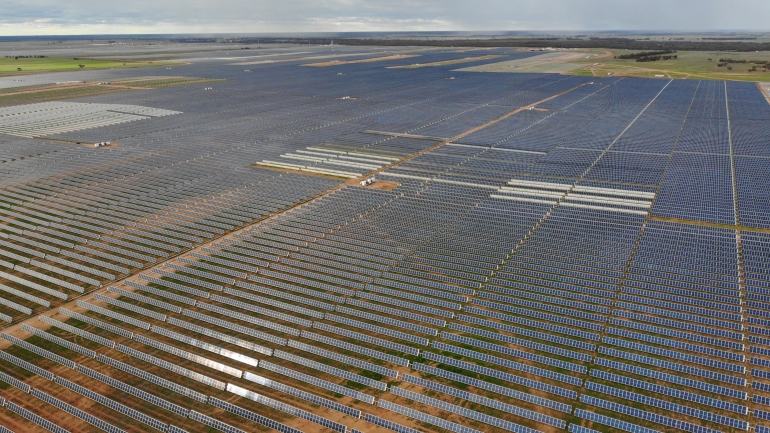UNSW Sydney is on track to use 100 per cent renewable electricity from 2020 as one of the biggest solar energy projects under construction in Australia nears completion.
The Sunraysia Solar Farm in the Riverina town of Balranald, near Mildura, when complete will use 755,000 solar photovoltaic panels over an 800-hectare site.
In December 2017, UNSW Estate Management signed a 15-year solar supply agreement with Maoneng Australia and Origin Energy, for 25 per cent of the solar farm’s renewable output to meet 100 per cent of UNSW’s electricity demand from 2020.
The solar energy supply agreement is a key component of UNSW’s commitment to environmental sustainability as set out in the Environmental Sustainability Plan 2019-21 (ESP).
The plan is designed to address UNSW’s key environmental issues and defines commitments, targets and activities across 10 focus areas including climate action, waste and recycling, energy and water efficiency.
In December 2019 UNSW will make the switch to 100 per cent renewable electricity, allowing it to achieve its goal of net zero carbon emissions from grid energy use by 2020.
UNSW Energy Manager Nicholas Jones said the solar farm construction was on track for completion by December 2019.
“Excellent progress is being made with the construction of the solar farm and we are on target to achieve our ESP goal,” Mr Jones said.
All the earthworks, trenching and cable laying are complete.
Over 104,000 support piles have been driven in and the contractors are now more than half-way through installing the 755,000 solar panels that will generate renewable energy from the solar farm.
At peak output the solar farm will generate over 255-megawatt direct current, which will be enough to power more than 50,000 homes.
The ground-breaking development will offset approximately 430,000 tonnes of carbon dioxide into the atmosphere per annum.
The dedicated section of the project supplying UNSW’s power from 2020 onwards - “Block 13” located in the north east corner of the farm - will contain approximately 140,000 solar panels.
All panels are mounted on single-axis sun-tracking mechanisms to optimise their power output throughout the day.
Once complete the Sunraysia Solar Farm (SSF) will be one of the largest in the world.
